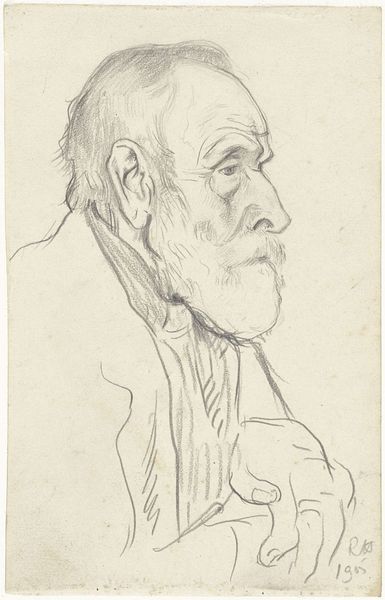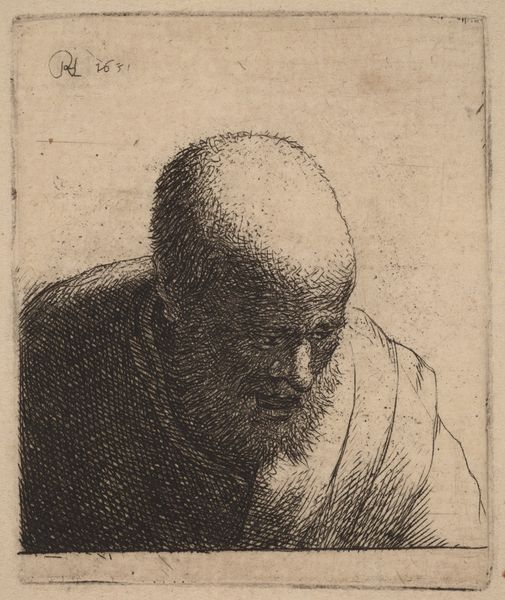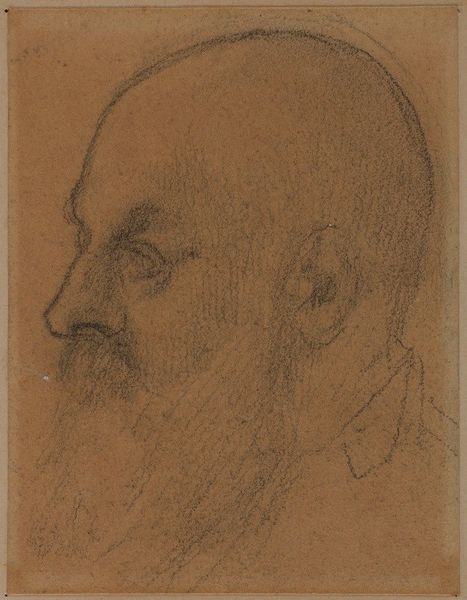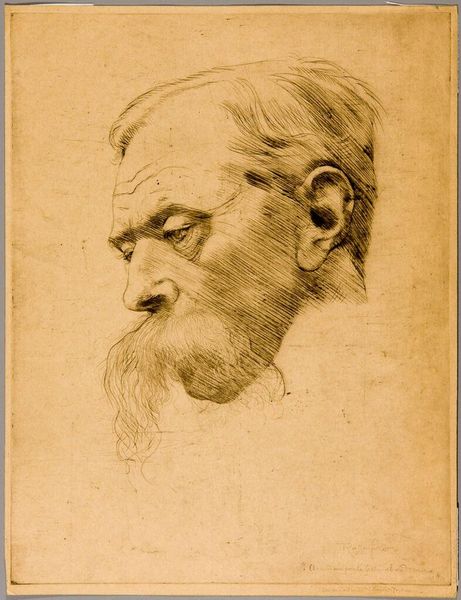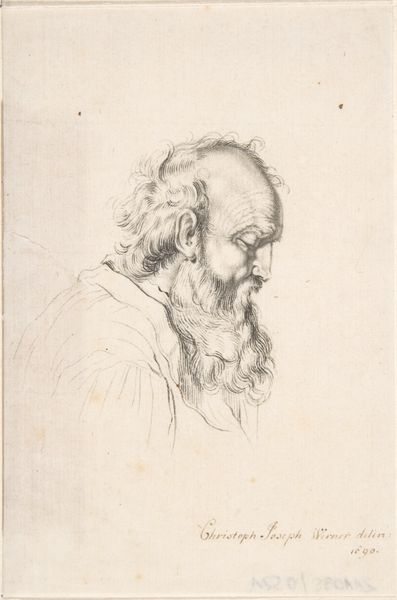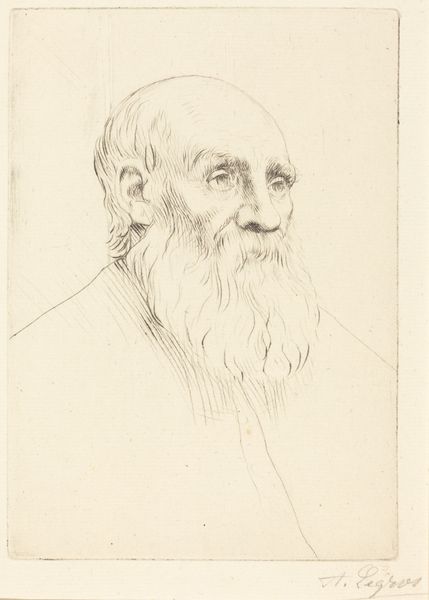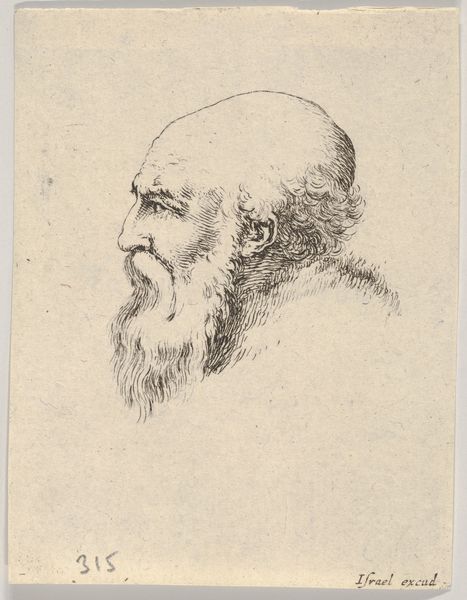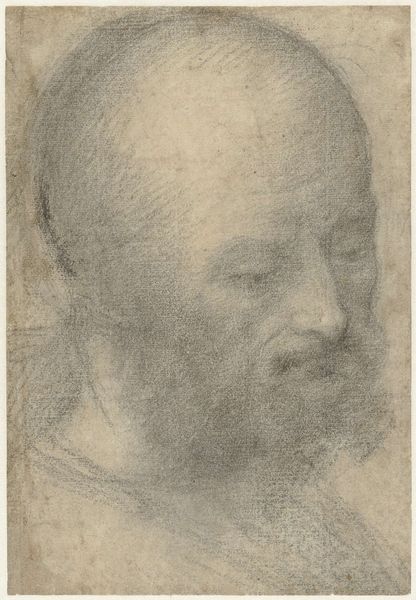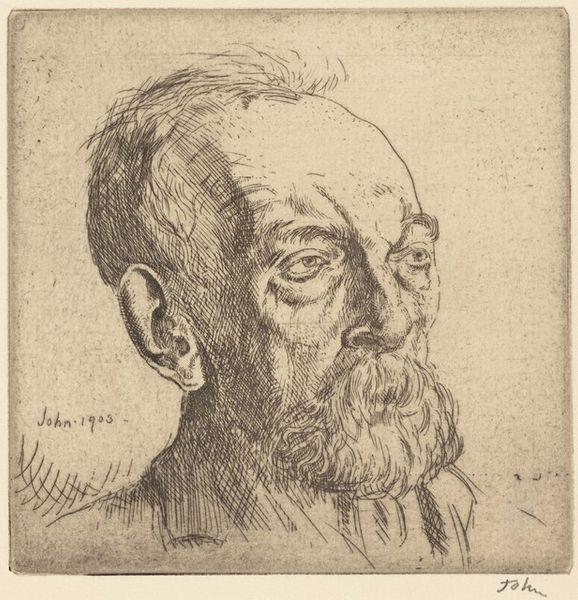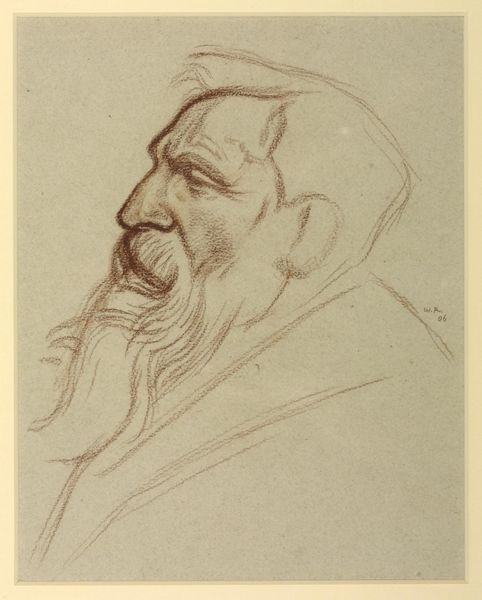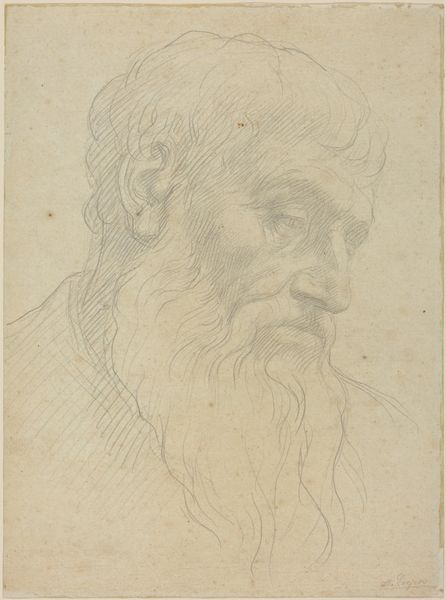
drawing, pencil
#
portrait
#
drawing
#
baroque
#
pencil drawing
#
pencil
Dimensions: height 314 mm, width 247 mm
Copyright: Rijks Museum: Open Domain
Curator: This is "Head of an Old Man, Looking Down, in Profile to the Right," a pencil drawing created between 1587 and 1668, attributed to Alessandro Tiarini. Editor: The delicate lines immediately strike me. There's a quietness, a sense of introspection captured in the slope of the head and the downturned gaze. It's melancholic, almost resigned. Curator: Well, considering its materiality as a pencil drawing, we can consider how accessible and reproducible such portraits became due to paper production during this era. It moves art from being an elite privilege to something that artisans can afford to experiment with. Editor: I see it also in terms of line and form. Look at the masterful rendering of the face through the most minimal strokes! The hatching gives a three-dimensionality that speaks volumes about Tiarini’s understanding of light and shadow. It’s Baroque restraint, but so effective. Curator: Baroque certainly, and that restraint underscores the shifting power dynamics within the Bolognese School. By concentrating on the tools readily available—pencils, paper—artists opened new avenues for workshops and apprentice systems to generate art for increasingly wider markets. It brings up questions about mass-produced art and copies of older, revered art, which allowed greater social diffusion, even if not always perfect copies. Editor: But isn't the focus, though, precisely on the artist's unique skill? It’s in those subtle gradations, that incredibly lifelike rendering. The piece draws you in, as though you were there in the room. How can one think only of tools when faced with that level of evocative depth? Curator: Precisely, we should consider then the material affordances here that would shape how that portrait became part of material culture beyond its immediate purpose. Was it a preliminary study for something grander? A teaching tool in a studio? Its current life depends on it surviving until this very day to tell its story and become more. Editor: Interesting considerations, indeed. It is like observing someone caught in thought, beyond time. The elegance of simplicity! Curator: Absolutely! Reflecting on the artwork's life underscores its place within historical processes and changing artistic practices, adding a critical lens for modern appreciation. Editor: Yes, together we see that both its place in art history and material relevance highlight Tiarini’s sensitive portrayal of humanity's quieter moments, and its visual simplicity becomes timeless.
Comments
No comments
Be the first to comment and join the conversation on the ultimate creative platform.
